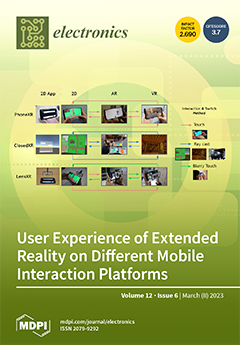Open AccessArticle
Practical Implementation of an Analogue and Digital Electronics System for a Modular Cosmic Ray Detector—MCORD
by
Marcin Bielewicz, Aleksandr Bancer, Andrzej Dziedzic, Jaroslaw Grzyb, Elzbieta Jaworska, Grzegorz Kasprowicz, Michal Kiecana, Piotr Kolasinski, Michal Kuc, Michal Kuklewski, Marcin Pietrzak, Krzysztof Pozniak, Maciej Sitek, Mikolaj Sowinski, Łukasz Świderski, Agnieszka Syntfeld-Kazuch, Jaroslaw Szewinski and Wojciech Marek Zabołotny
Cited by 2 | Viewed by 1330
Abstract
A Modular COsmic Ray Detector (MCORD) was prepared for use in various physics experiments. MCORD detectors can be used in laboratory measurements or can become a part of large measurement sets. MCORD can be used as a muon detector, a veto system, or
[...] Read more.
A Modular COsmic Ray Detector (MCORD) was prepared for use in various physics experiments. MCORD detectors can be used in laboratory measurements or can become a part of large measurement sets. MCORD can be used as a muon detector, a veto system, or a tool supporting the testing and calibration of other detectors. MCORD can also work as a stand-alone device for scientific and commercial purposes. The basic element of MCORD is one section consisting of eight oblong scintillators with a double-sided light reading performed by silicon photomultipliers (SiPMs). This work presents a practical description of testing, calibration, and programming of analogue and digital electronics modules. The characterisation and calibration methods of the analogue front-end electronic modules, the obtained results, and their implementation into an operating system are presented. In addition, we describe the development environment and the procedures used to prepare our kit for practical use. The architecture of the FPGAs is also presented with a description of their programming as a data-collecting system in a simple coincidence circuit. We also present the possibilities of extending the data analysis system for large experiments.
Full article
►▼
Show Figures





